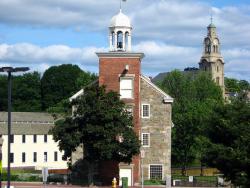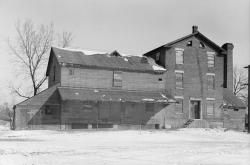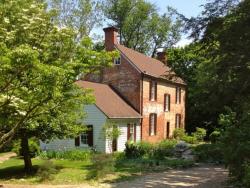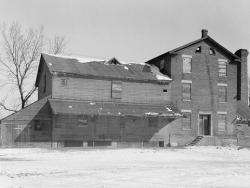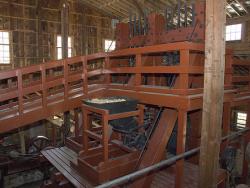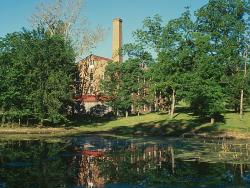The Wilkinson Mill, situated on the west bank of the Blackstone River in Pawtucket, was built between 1810 and 1811 by machinist Oziel Wilkinson. Constructed in stone rubble, three and one-half stories high, the mill played a critical role in the history of textile technology, in steam power generation, and in the development of the machine tools industry.


